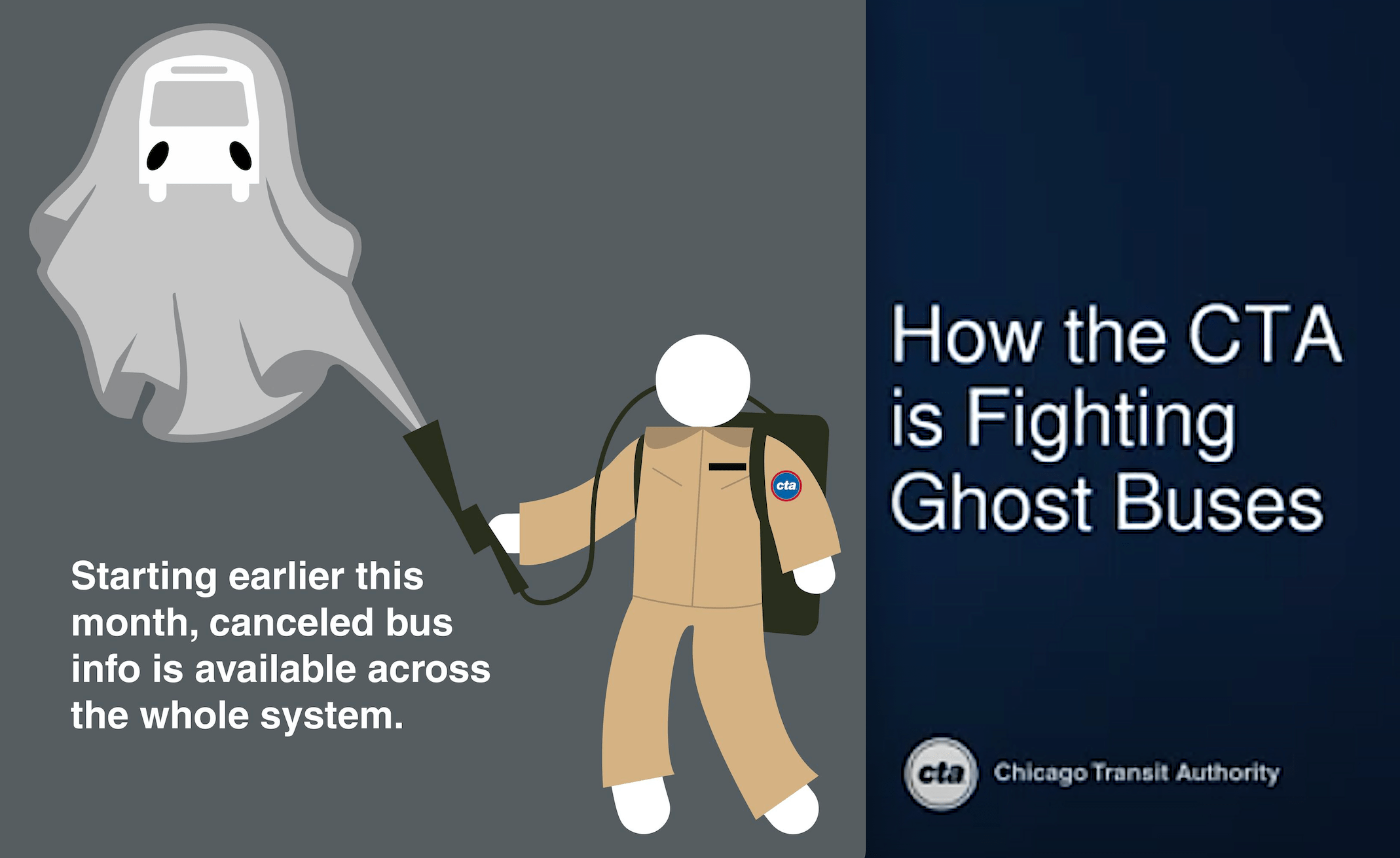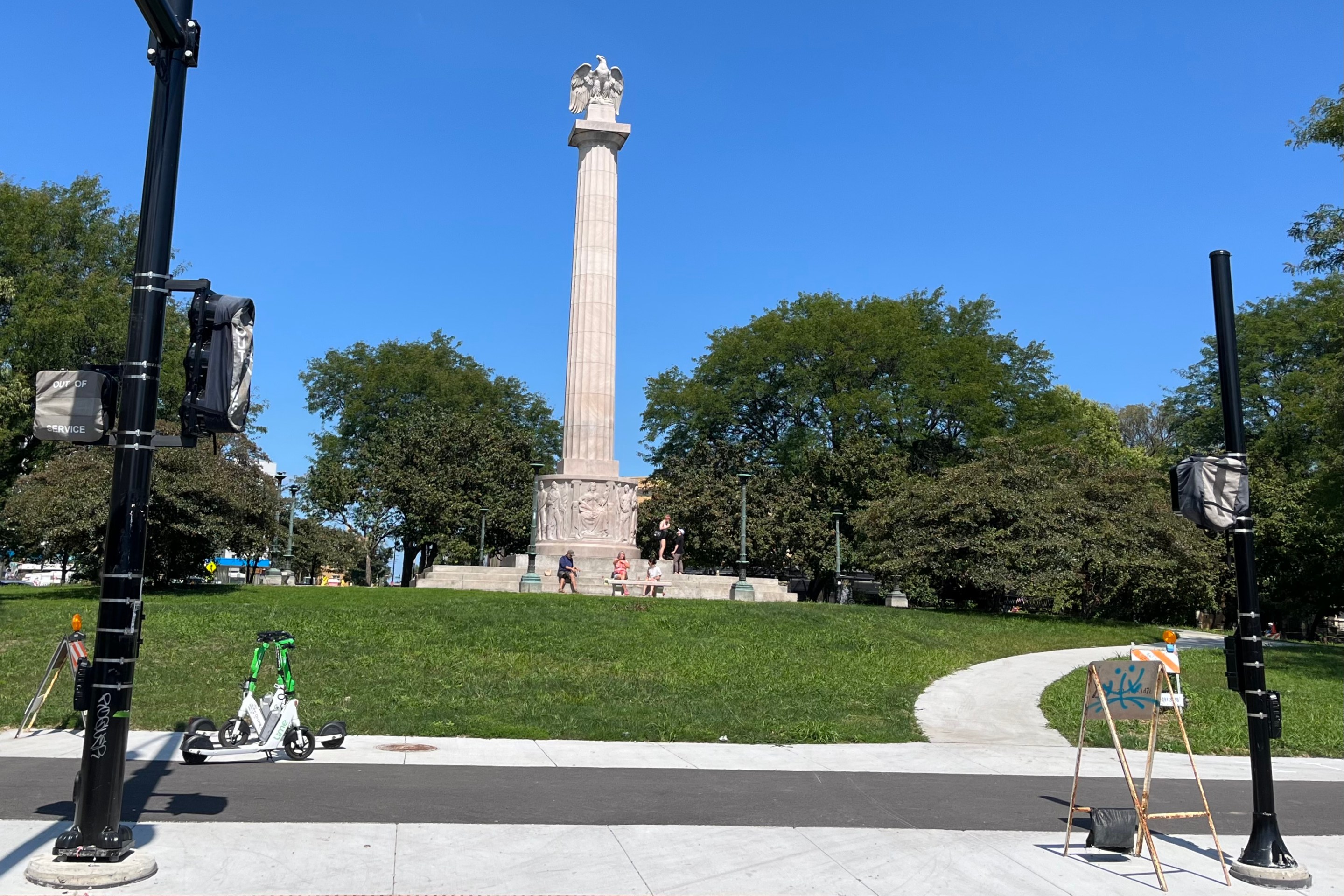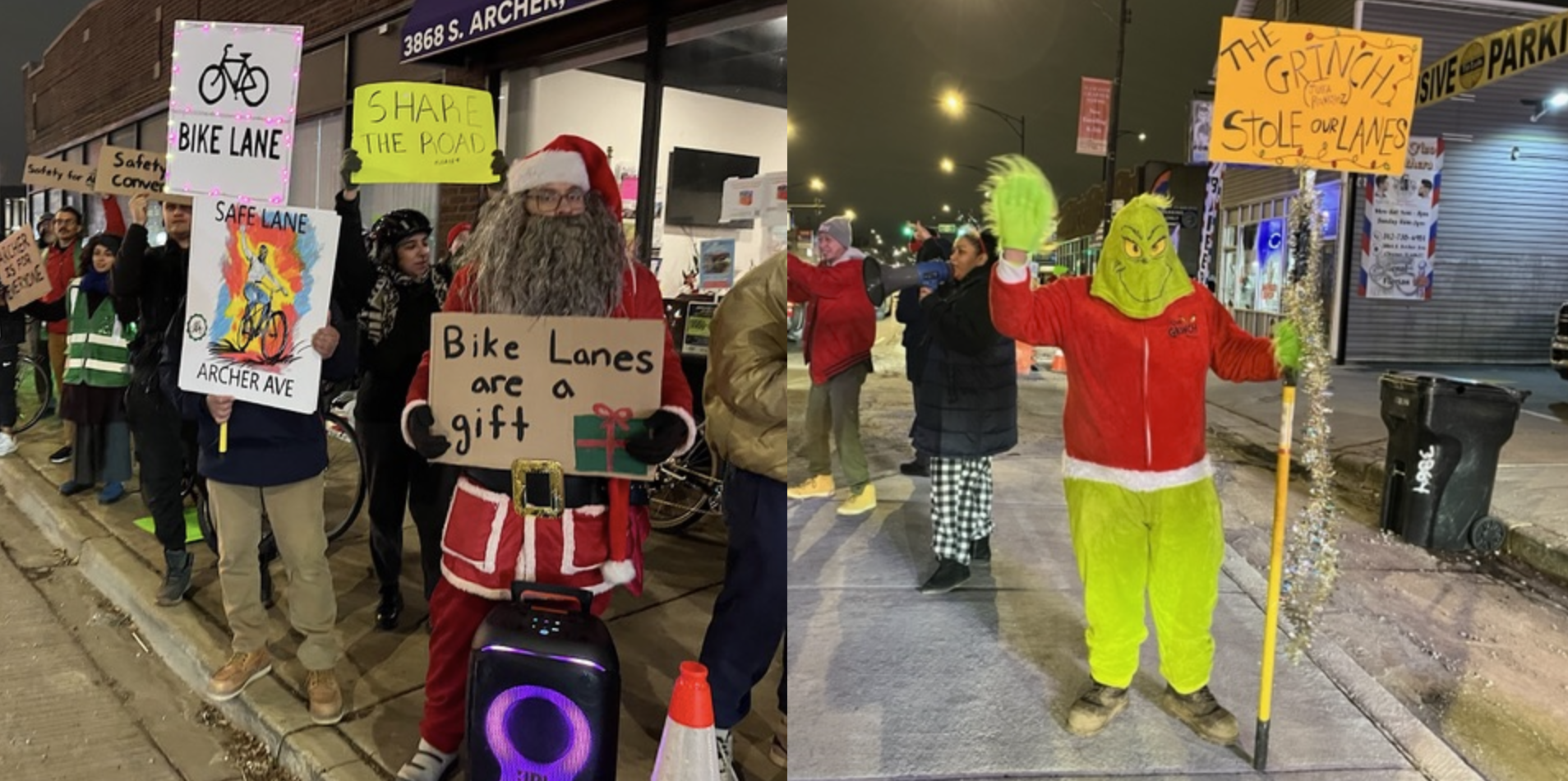
The CTA’s frequent bus network initiative, which seeks to reduce headways on bus routes serving major Chicago corridors, appears to be bearing fruit.
During yesterday's monthly meeting of the agency's board, CTA officials reported on how the initiative has been going since it launched in March. The staff also reported on bus priority signal improvements, what the agency is doing to eradicate "ghost buses", and general ridership trends.
The board also voted to allow the Chicago Market food co-op, which has been trying to open a store in Wilson Station's Gerber Building since before the pandemic, not to pay rent for six month, as it tries to secure funding for building renovations.
It was the first board meeting since the CTA completed Phase 1 of the Red Purple Modernization project, and the new Lawrence, Argyle, Berwyn and Bryn Mawr stations opened. Before going into a closed session, the board recognized the entire project team, most of whom were present.

Bus frequency report
During the financial reports portion of the meeting, CTA Chief Innovation Officer Molly Poppe told the board that, while overall bus ridership has been growing over the past three years, post-pandemic 'L' ridership recovery has been more than sluggish until the past couple of months.
In March, the CTA announced the Frequent Network program to reduce headways on eight major routes to "10 minutes or better," and eventually expand the intitiative to 20 bus lines. The agency is planning to add another four this fall: - 53 Pulaski, 55 Garfield, 77 Belmont and 82 Kimball-Homan.
Poppe said that, so far, "the frequent bus network [ridership] outpaces the growth of the whole system." She singled out the J14 Jeffery Jump, an express bus that runs between the Loop and several Southeast Side neighborhoods without the 'L' service, and the 60 Blue Island/26th, which primarily serves Little Village, Pilsen and University of Illinois Chicago's east campus. The former, Poppe said, saw the ridership increase by about 20 percent.

One interesting trend, she said, is that the number of South Side riders who transfer from buses to the ‘L’ has declined in recent years. Poppe said that CTA is trying to figure out why.
Board member Roberto Requejo asked what the CTA is doing to maintain those frequencies and avoid having buses stuck in traffic. He acknowledged that, since either the Chicago Department of Transportation or the Illinois Department of Transportation control most streets, there is only so much the transit agency can do on its own to shorten trip times.
Poppe responded that one way to reduce wait times is hiring more drivers. In the long run, CTA is looking to add traffic signal priority to more routes, install queue jump lanes that would allow bus drivers to bypass other vehicles at certain intersections, and adding bus-only lanes. Poppe added that Western and Ashland avenues already have signal priority, and the CTA is planning to add it to 79th Street, a major South Side corridor and one of the highest-ridership bus routes. Route 79 was one of the first routes to get ten-minute headways as part of the Frequent Network program.
"We’re going to have dedicated bus lanes, and we're going to add a lot of [measures] to ensure these bus lanes are used by buses only," Poppe said. Asked about how long it will take until these plans become a reality, she said the CTA does work during the regular construction seasons. She added that some projects, like installing AI-assisted traffic cameras, would take "several years."
Board Chair Lester Barclay asked what the CTA plans to do with its share of the extra $150 million in sales tax revenue the Regional Transportation Authority will receive this year due to a change in Illinois' sales tax rate. Chief Financial Officer Tom McKone responded that the money will go into the CTA's reserves, which will be used to address regular financial shortfalls.
Rail ridership update
Later during the meeting, CTA Acting President Nora Leerhsen talked about 'L' ridership trends. She said the system saw 3.1 million riders during Lollapalooza weekend, which made it the "biggest [ridership] week since the pandemic." That number, she said, included around 320,000 new riders.
Leerhsen added that Wilson and Bryn Mawr stations saw 23 percent ridership growth in the past year. Lawrence and Berwyn stations, which were closed completely throughout RPM Phase I, have regained their share of systemwide ridership since they reopened on July 20.
She also said that, since the Damen Green Line station opened last year, it and the nearby Ashland/Lake and California/Lake Green Line stations saw year-to-year ridership growth of around 20 percent. The Morgan Green Line station further east saw ridership growth of around 13 percent.
Chicago Market lease
Chicago Market currently leases the space in the Gerber Building, the old Wilson Station headhouse on the the north side of the avenue, built in 1923. The structure became available during the 2014-2017 station overhaul that, among other things, relocated the main entrance to a new structure on south side of Wilson. The grocery store opening has been delayed several times.
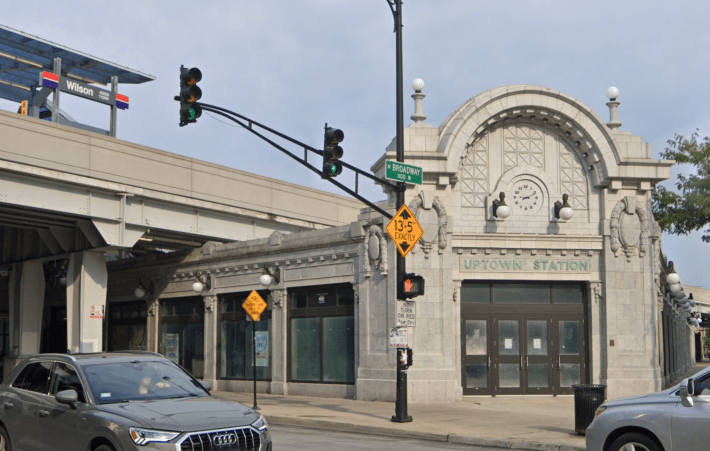
McKone said the co-op asked for a six-month rent abatement as it tries to raise money to complete the building rehab and renovations.
Board member Michael Eaddy said that, while he was aware of what delayed the renovations, he wanted an explanation in the public record. CTA Chief Infrastructure Officer Bill Mooney said the issue was that, since COVID-19, "market conditions change dramatically." Chicago Market sent out bids for the renovations, only to see the costs go up dramatically. The rent abatement, he said, would give them time to raise money.
“So, it sounds like we’re very hopeful that they are able to put the financial package together?” Eaddy asked.
"Fingers crossed," Mooney responded, adding that "everybody wants to see it happen," including elected officials and Uptown residents.
The board voted unanimously to approve the rent abatement.
"Ghost bus" busters
In her report, Leerhsen said that "ghost buses," scheduled runs that appear on the CTA Bus Tracker but never actually arrive, is an issue that "has haunted us, no pun intended, over the last couple of years." She acknowledged that the problem has "eroded trust in a significant way." While hiring more bus drivers helped address the problem, she said, so is updating bus tracking on the CTA app and third-party bus tracking apps.
Poppe explained that factors such as buses breaking down, or bus operators being unable to park in layover spots because a private vehicle driver illegally parked there, create false positives or false negatives. Now, when the operators call the control center, the control center staff can update the information on the app to reflect whether the bus is actually coming or not.

Buses that are cancelled, Poppe said, are clearly labeled as cancelled, instead of either still being listed or disappearing from the trackers. The CTA reached out to third-party app developers to make sure that bus runs are labeled as cancelled there as well.
Another change, Poppe said, is that the tracker apps will now clearly display bus reroutes. While the CTA puts up paper notices at bus stops and online notices on the website and through the apps, in the past, the Bus Tracker still displayed the buses as arriving. Now, she said, the trackers will clearly indicate that the bus isn’t coming due to a reroute. "You will now get 'No service is scheduled' and you'll get an alert," she said.
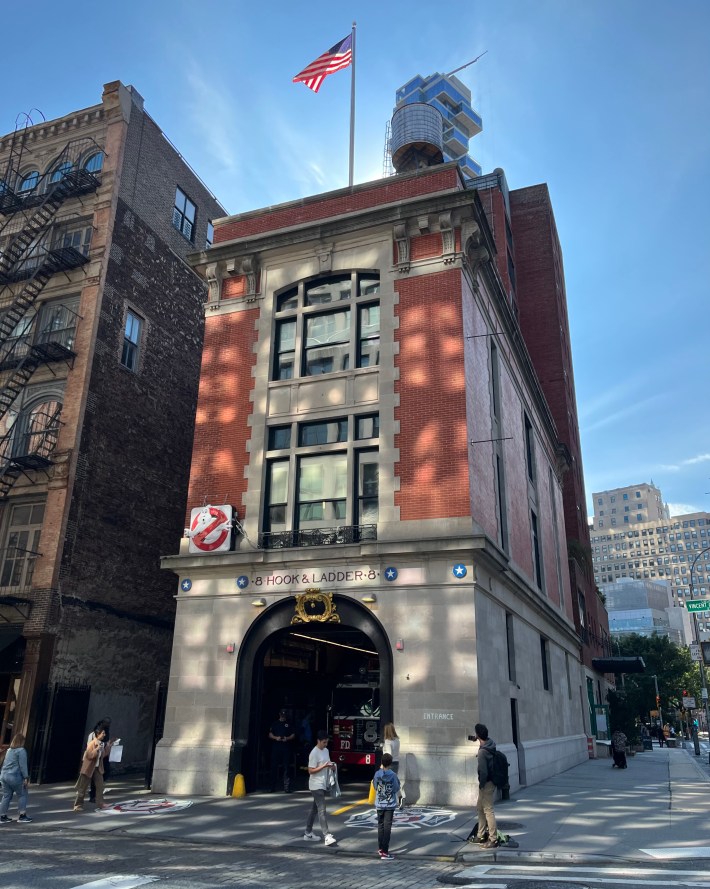
Another advantage of the update, she said, that if there is a reroute due to an unexpected emergency such as a water main break, the control center will be able to go into the trackers and make sure the arrival information affects that. "This is dynamic enough where we can update it in real time," Poppe said.
In other words, to quote the "Ghostbusters" movie theme song, "If there's something strange in your neighborhood," the trackers will let you know.

Did you appreciate this post? Streetsblog Chicago is currently fundraising to help cover our 2025-26 budget. If you appreciate our reporting and advocacy on local sustainable transportation issues, please consider making a tax-deductible donation here. Thank you!
